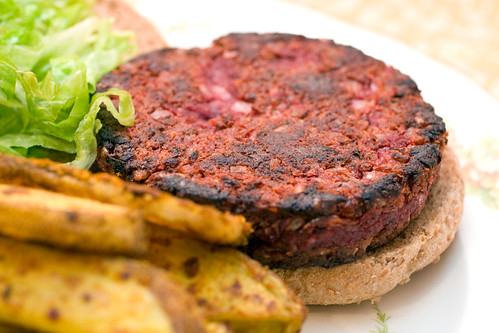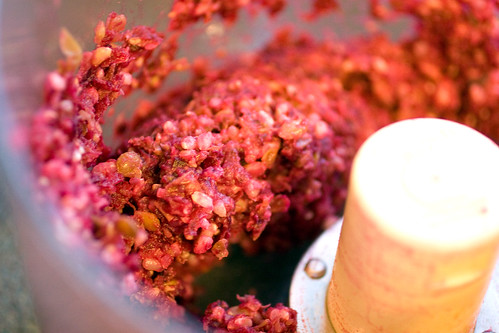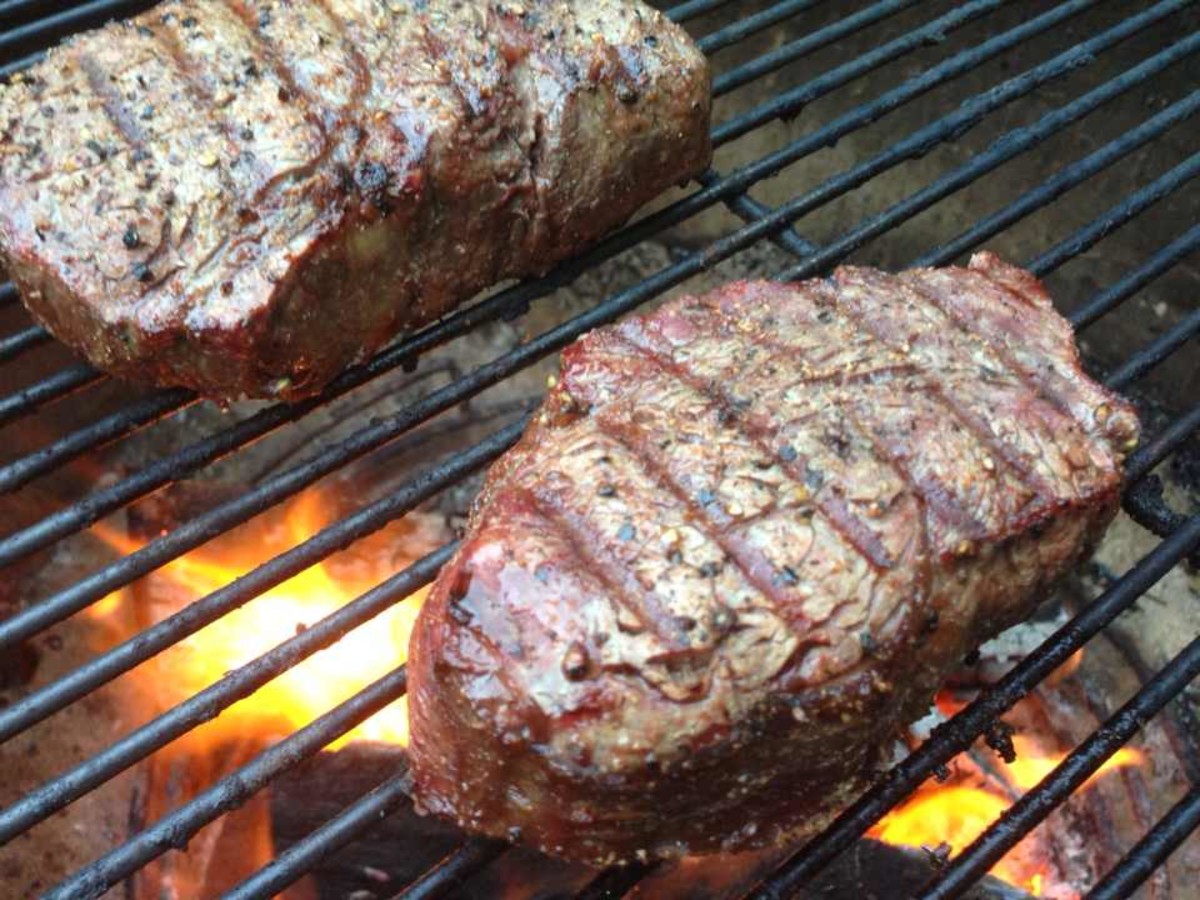Fermentation is a fascinating thing. At its most basic, it’s the act of using yeast (or occasionally other bacteria) to digest carbohydrates and convert them to alcohol and carbon dioxide (or occasionally other products, such as lactic acid). It’s what puts the sour into sauerkraut and the bubbles in Champagne. It’s what makes dried chorizo tangy and tea complex. It’s what makes you forget all of this neat stuff when you’ve had a bit too much beer. It’s also, of course, what gives a great pizza crust (and all yeast-leavened breads, for that matter) its light, airy structure and distinctive complex, slightly sour taste.
So how exactly does it work? Let’s go through the basic steps of pizza dough to get an idea.
- 1. Mixing/Kneading: Water, flour, salt, and yeast are first mixed together. During this stage, the two primary proteins found in flour (gliaden and glutenin) begin to interconnect, forming an elastic network. This protein network is called gluten, and it’s what gives bread its structure. As bread is kneaded, the strands of gluten align themselves and form wide, highly elastic sheets. Starch molecules suspended in this network also absorb water during this stage
- 2. Rest/First Rise: During this stage, fermentation occurs. The yeast begins to digest carbohydrates, producing carbon dioxide, which causes air bubbles in the dough to inflate and swell. Meanwhile, gluten continues to strengthen, partially due to enzymatic action which shortens proteins and makes it easier for them to link up, and also due to the mechanical stretching that the slowly inflating bubbles cause
- 3. Second Rise/Proof: After the first rise, the bread is shaped into balls or loaves for a final rise before baking. During this stage, the gluten, which is tense from the stretching it underwent during shaping loosens up, while the carbon dioxide bubbles continue to inflate. With pizza doughs, the risen ball is flattened and stretched immediately before baking, though care is taken to ensure that the ridge around the end of the crust (the cornicione) is not overly deflated
- 4. Baking: As soon as the dough hits the hot oven, the air pockets inside it immediately start to expand, causing the dough to rapidly rise and inflate. Eventually, the gluten network is stretched to capacity. The heat of the oven causes the gluten to solidify, giving the bread structure. The exterior crust takes on color as the proteins and sugars undergo the Maillard reaction, a complex cascade of chemical reactions that produce the complex, toasted aroma of good bread
experienced bakers and pizza-makers know that this is not the best way to make dough
The warmer the dough is during fermentation, the faster the yeast multiply and produce carbon dioxide (carbon dioxide production rate maxes out at around 90°F). So with very simple recipes, this entire process can take place in just a few hours. But experienced bakers and pizza-makers know that this is not the best way to make dough. Though yeast produces carbon dioxide rapidly at high temperatures, it also produces undesirable flavors. Rather than tasting rich and complex, hastily made breads have the one-dimensional flat flavor of the flour, and sometimes even develop off flavors, like sour milk..
So What’s the Solution? Retardation
Retarding a dough is the act of placing it in a cold environment after it’s mixed in order to slow down the activity of the yeast. At cool fridge temperatures, yeast behaves differently, producing more of the desirable flavor compounds and fewer of the sour ones. It also produces carbon dioxide more slowly.
Texture is also improved: Long fermentation times give the enzymes present in the flour more opportunities to cleave proteins (a process known as autolysis), making it easier for them to untangle, straighten out, and link up into gluten. Gluten structure is improved. Finally, the colder the dough when you shape it before the final proof, the fewer bubbles are forced out of it.
Doughs that are shaped and proofed after a slow, cold fermentation demonstrate noticeably better flavor and better structure.
So what’s the ideal time-frame for a cold fermentation?
To find out, I made a large batch of pizza dough and allowed it to cold-ferment in the fridge for 10 days. Each day (including the first before it went in the fridge), I pulled out a 6-ounce chunk of it, formed it into a ball, allowed it to proof at 70 degrees for 2 hours, stretched it into a 10-inch disk, and baked it using our skillet/broiler Neapolitan method.
The results were quite interesting.
Bubble, Bubble
This is the pie that was baked on the very first day. As you can see, it bakes to a relatively uniform shade of brown, and has a pretty tight, small-holed structure. This is not ideal. A perfect pizza should have a very airy, open texture in the cornicione, with a varied degree of browning, some spots sill pale blond, others brown, and still others nearly carbonized. It’s this contrast of colors that gives pizza crust interest and complexity.
The flavor of the crumb was well-seasoned (the dough had a 1.5% salt content), but one dimensional.
Even by the second day, there was a marked improvement in the crust flavor, though as far as browning went, it was still pretty uniform.
By the third day, however, there were some pretty significant improvements. See this comparison:
As you can see, the crust now runs the gamut from pale to black. But what’s the cause of this?
I always figured it had something to do with a chemical conversion in the dough itself. Perhaps starches breaking down into sugars that brown more rapidly, or maybe something to do with the pH level changes caused by fermentation. But it didn’t quite make sense to me—if anything, lowering the pH (acidifying) would cause the bread to brown less well, not to form darker spots the way this crust was.
Closer inspection revealed a much more likely scenario: Due to the way it aids in gluten development, slower fermentations create a better gluten structure, which in turn causes the dough to form larger, thinner bubbles.
This crust, from day 5, shows an even lighter structure, and even better blistering.
Because of their low density, these blisters cook rapidly
A one-day quick ferment—because of its lack of bubbles and the tightness of the dough—will form a smoother surface and tighter crumb as it cooks. Because it’s more dense, it takes a little longer to cook, and browns more evenly. The three day dough, on the other hand, upon entering the oven immediately starts blistering, stretching small sheets of gluten outwards. What this does is create localized areas of very thin, light dough. Because of their low density, these blisters cook rapidly, turning black before the bulk of the crust has a chance to brown deeply.
That’s what causes the leopard-spotting in a properly fermented, properly baked Neapolitan pizza crust, and in fact, if you take a close look at a perfectly leopard-spotted pie, you’ll see that every black spot represents the surface of a tiny bubble that’s extended outward from the main bulk of the crust.
When the dough is carefully stretched (see our Pieman’s Craft series for a good demo on how to do that), the effect of this blistering can be quite dramatic. Check out this perfectly charred bubble here!:
Take It To The Limit
So does this mean that you can keep a ball of dough in your fridge indefinitely and that it will keep getting better and better as time goes on?
No!
Eventually, even at cold temperatures, the yeast will start produce a large amount of those sour milk aromas, throwing off the flavor of your bread. And there’s an even bigger problem: as the alcohol content and acidity of the dough rises, eventually it gets so high that the yeast simply cease to operate (it’s very similar to how I cease to operate once my alcohol content gets too high). At this stage, if you pull a ball of dough out of the fridge and onto the counter for the final proof before baking, nothing happens. The dough barely rises, and the structure of the bread suffers.
The Short Answer: Three to Five Days
If you’ve managed to get through all that dense, unleavened text, you’ve already got the answer to the titular question. For the rest of you who just skim (I know you’re out there),
three to five days of cold fermentation is your best bet
three to five days of cold fermentation is your best bet for dramatically improving your dough’s flavor, texture, and workability.
In my fridge, which keeps at around 38°F, loss of quality started to occur around day 6. It continued to get worse and worse. By day 10, the pizza crusts showed barely any rise at all, and had a very distinct and off-putting sour flavor. Depending on your fridge, your timing might be a little different than mine, so it pays to experiment a bit. It’s easy—after you make the first batch of dough, all you have to do is shape and bake a pizza each day—and makes for an interesting week of pizza-eating.
Given all this, does it mean that I’m never going to make a one-day pizza dough again? Absolutely not. But it does mean that if I can get myself to think ahead at least a bit (unlikely), I know a surefire way to improve my crusts in the future.

















